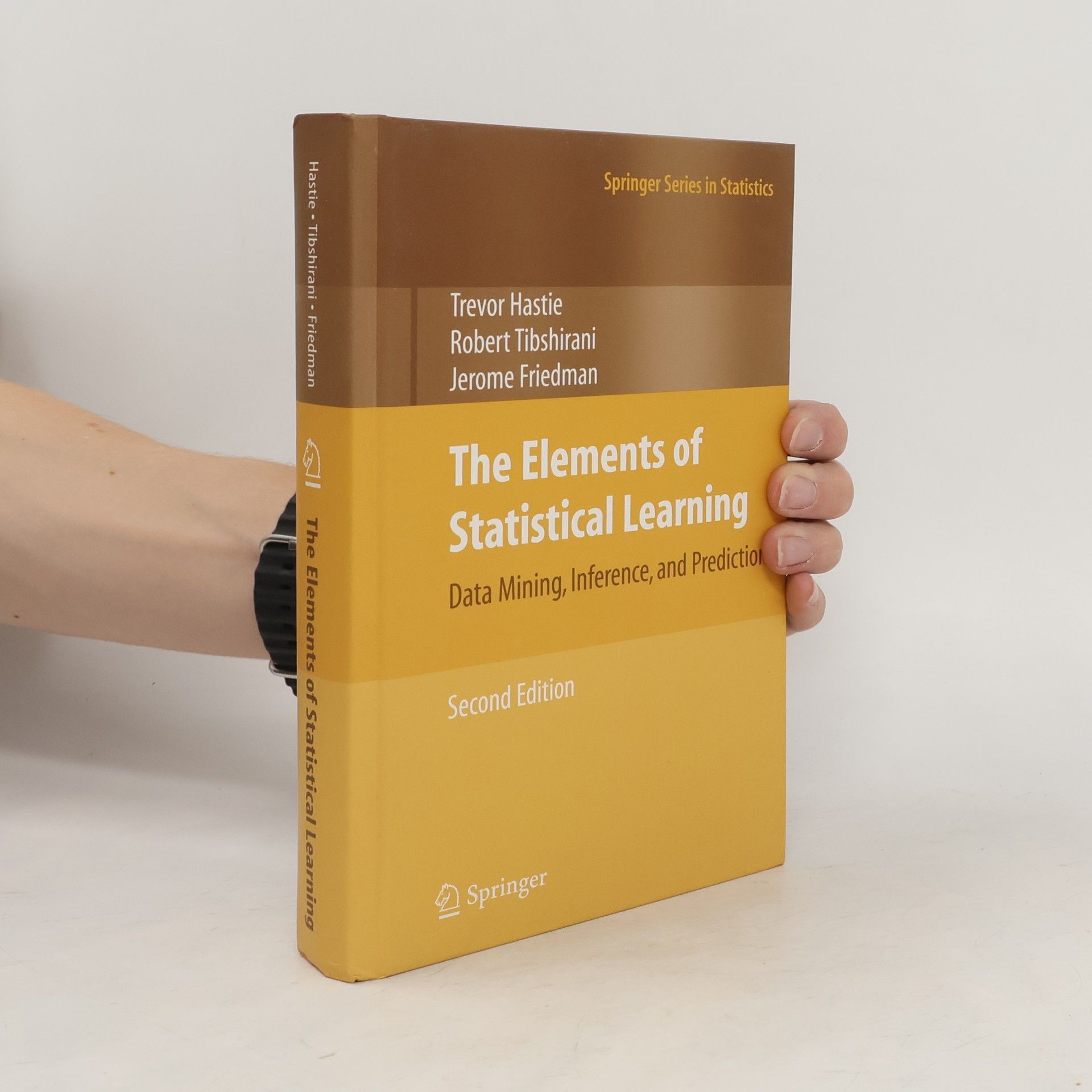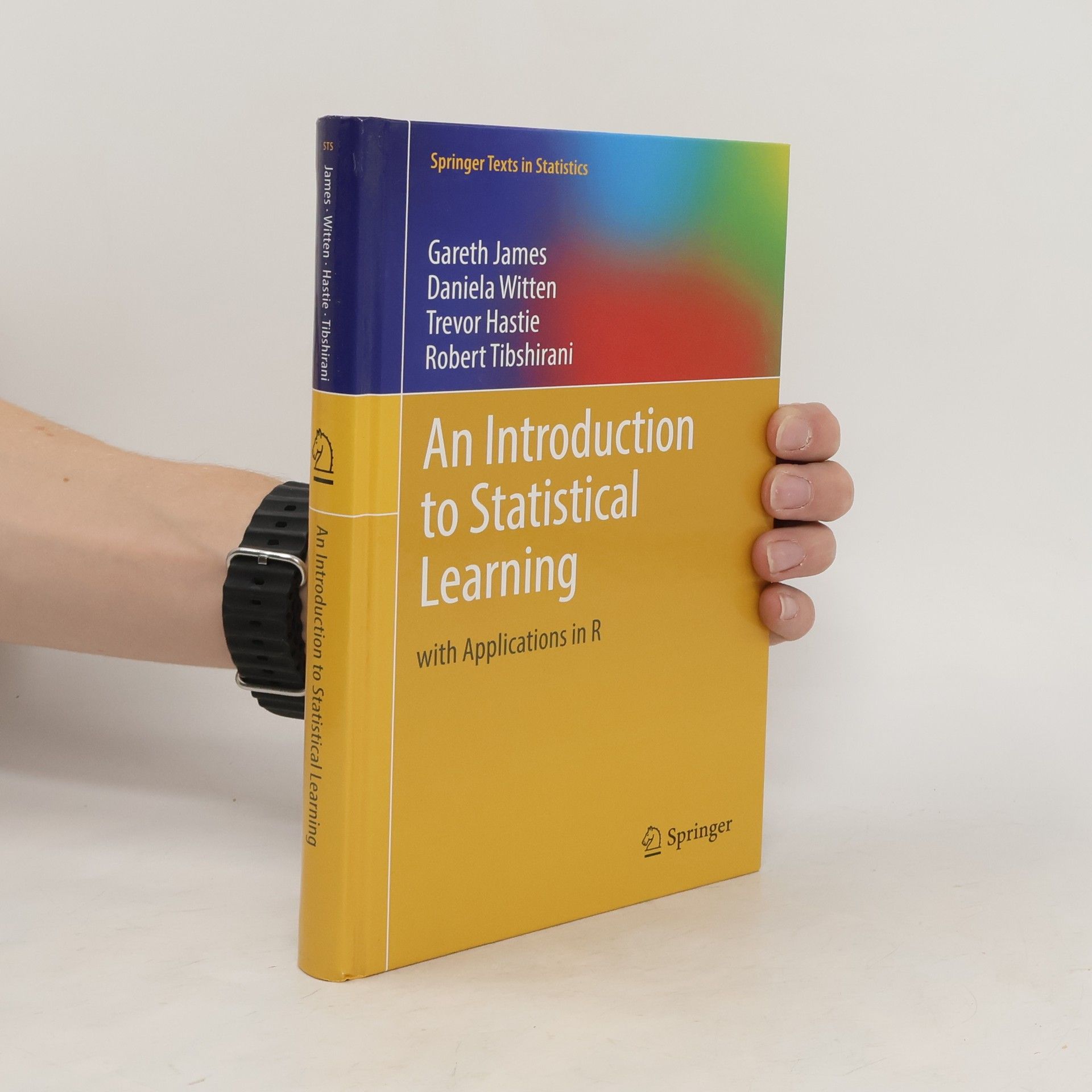This book serves as a comprehensive guide to statistical learning, emphasizing practical applications and theoretical foundations. It covers essential topics such as regression, classification, and resampling methods, making complex concepts accessible to readers with a background in statistics and mathematics. The inclusion of real-world examples and case studies enhances understanding, while accompanying software tools facilitate hands-on learning. Ideal for students and professionals alike, it bridges the gap between statistical theory and practical implementation in data analysis.
Trevor Hastie Libros






An introduction to statistical learning
- 426 páginas
- 15 horas de lectura
This book presents key modeling and prediction techniques, along with relevant applications. Topics include linear regression, classification, resampling methods, shrinkage approaches, tree-based methods, support vector machines, and clustering.
The Elements of Statistical Learning, Second Edition
- 745 páginas
- 27 horas de lectura
"During the past decade there has been an explosion in computation and information technology. With it have come vast amounts of data in a variety of fields such as medicine, biology, finance, and marketing. The challenge of understanding these data has led to the development of new tools in the field of statistics, and spawned new areas such as data mining, machine learning, and bioinformatics. Many of these tools have common underpinnings but are often expressed with different terminology. This book describes the important ideas in these areas in a common conceptual framework. While the approach is statistical, the emphasis is on concepts rather than mathematics. Many examples are given, with a liberal use of color graphics. It is a valuable resource for statisticians and anyone interested in data mining in science or industry. The book's coverage is broad, from supervised learning (prediction) to unsupervised learning. The many topics include neural networks, support vector machines, classification trees and boosting---the first comprehensive treatment of this topic in any book. This major new edition features many topics not covered in the original, including graphical models, random forests, ensemble methods, least angle regression and path algorithms for the lasso, non-negative matrix factorization, and spectral clustering. There is also a chapter on methods for "wide'' data (p bigger than n), including multiple testing and false discovery rates."--Publisher's description
Computer Age Statistical Inference
Algorithms, Evidence, and Data Science
- 496 páginas
- 18 horas de lectura
Embark on an exhilarating exploration of the modern revolution in statistics led by two influential figures in the field. This book delves into groundbreaking methodologies and transformative ideas that have reshaped statistical practices. It highlights the impact of these innovations on various disciplines, making complex concepts accessible and engaging for readers. Through their insights, the authors illuminate the evolving landscape of data analysis and its significance in today's world.
The elements of statistical learning
- 549 páginas
- 20 horas de lectura
This book describes the important ideas in a common conceptual framework. While the approach is statistical, the emphasis is on concepts rather than mathematics. Many examples are given, with a liberal use of color graphics. It should be a valuable resource for statisticians and anyone interested in data mining in science or industry.
Computer Age Statistical Inference, Student Edition
Algorithms, Evidence, and Data Science
This engaging text simplifies complex topics in data science, statistics, and machine learning, making them accessible to readers. Enhanced with exercises, it encourages practical application and deeper understanding, ensuring a comprehensive grasp of these essential fields.
Focusing on the challenges posed by big data, this book explores how the sparsity assumption can help extract meaningful patterns from extensive datasets, even when the number of features exceeds observations. It delves into various techniques, including the lasso for linear regression, generalized penalties, and numerical optimization methods. Additionally, it covers statistical inference for lasso models, sparse multivariate analysis, graphical models, and compressed sensing, providing a comprehensive guide to modern data analysis techniques.
This book provides a comprehensive overview of statistical learning techniques, focusing on concepts and applications rather than theoretical complexities. It covers essential topics such as regression, classification, and resampling methods, making it accessible for beginners. Real-world examples and practical exercises enhance understanding, while the inclusion of R programming helps readers implement the methods discussed. Ideal for students and professionals alike, it serves as a valuable resource for those looking to deepen their knowledge in data analysis and machine learning.